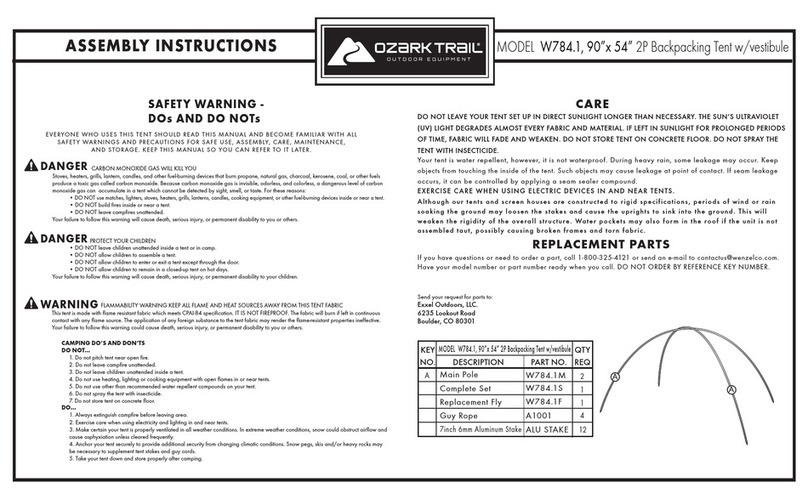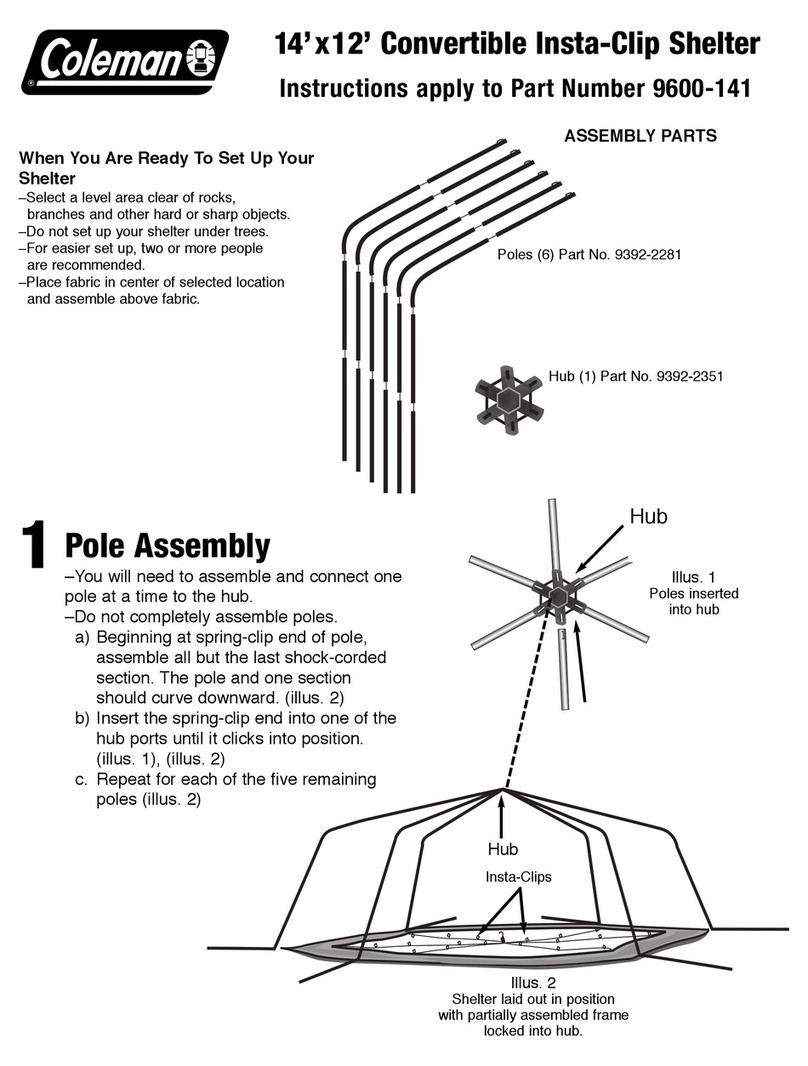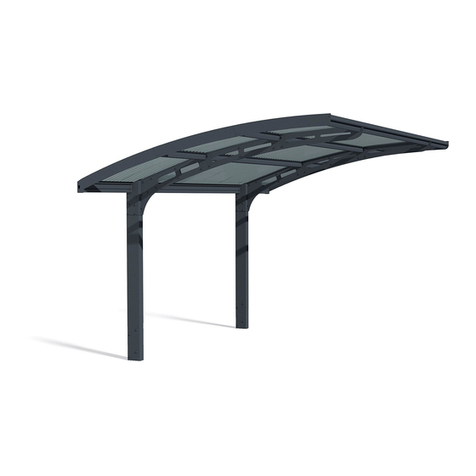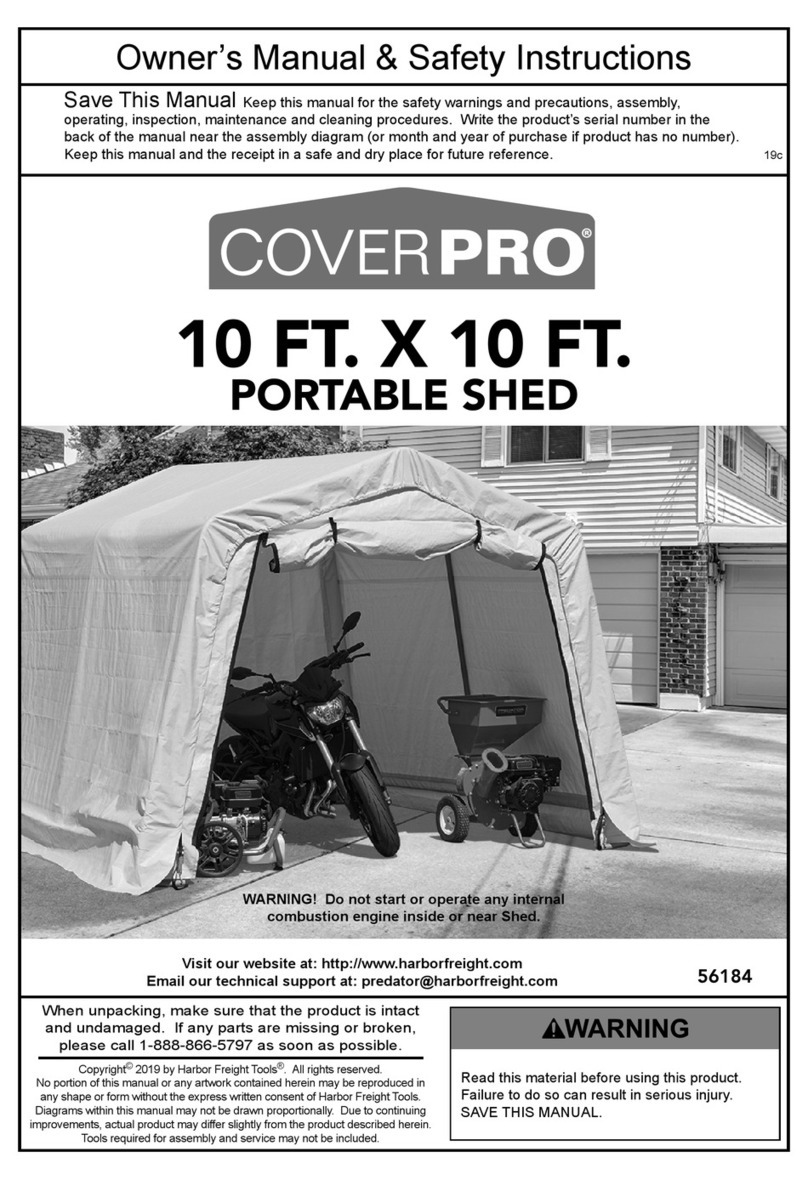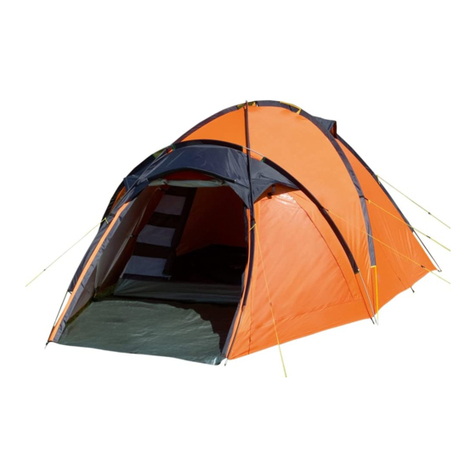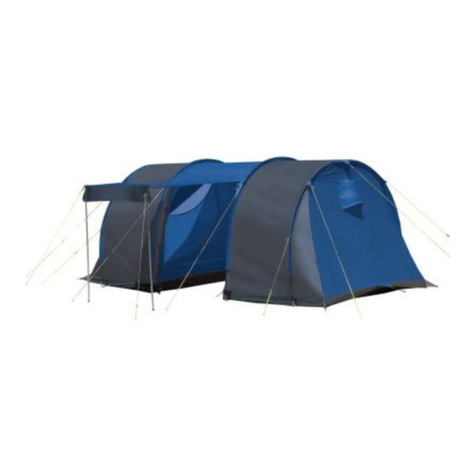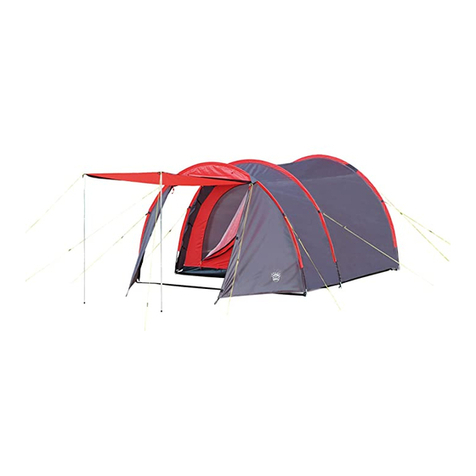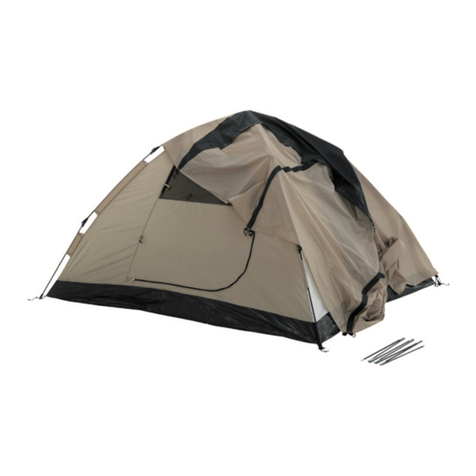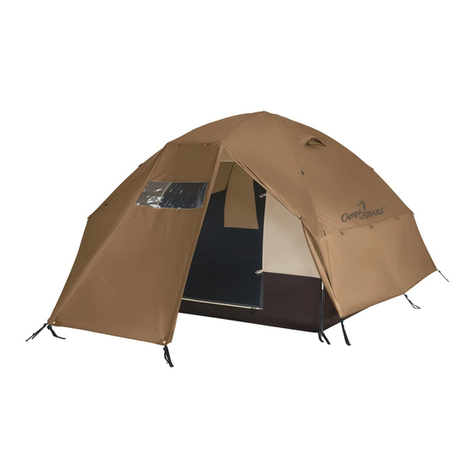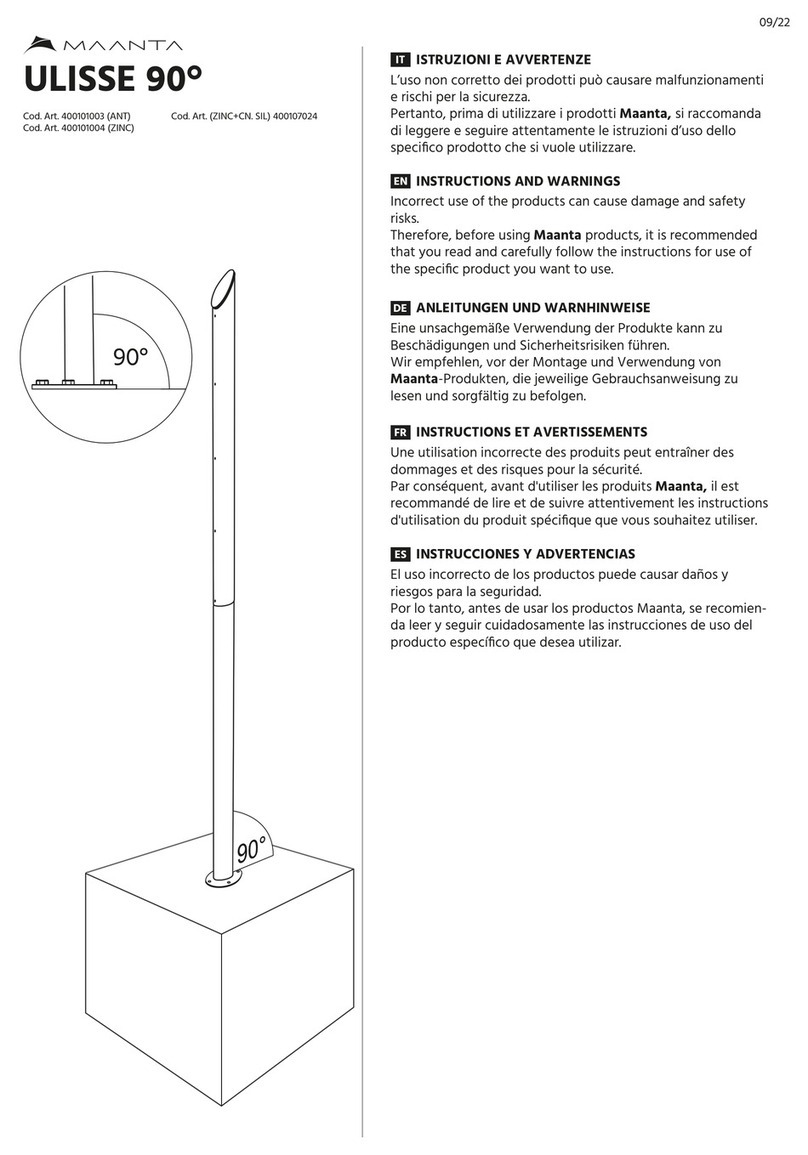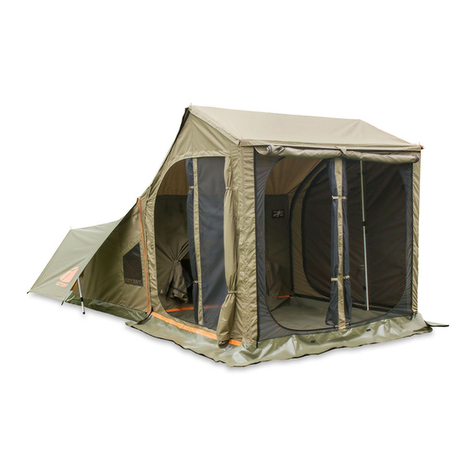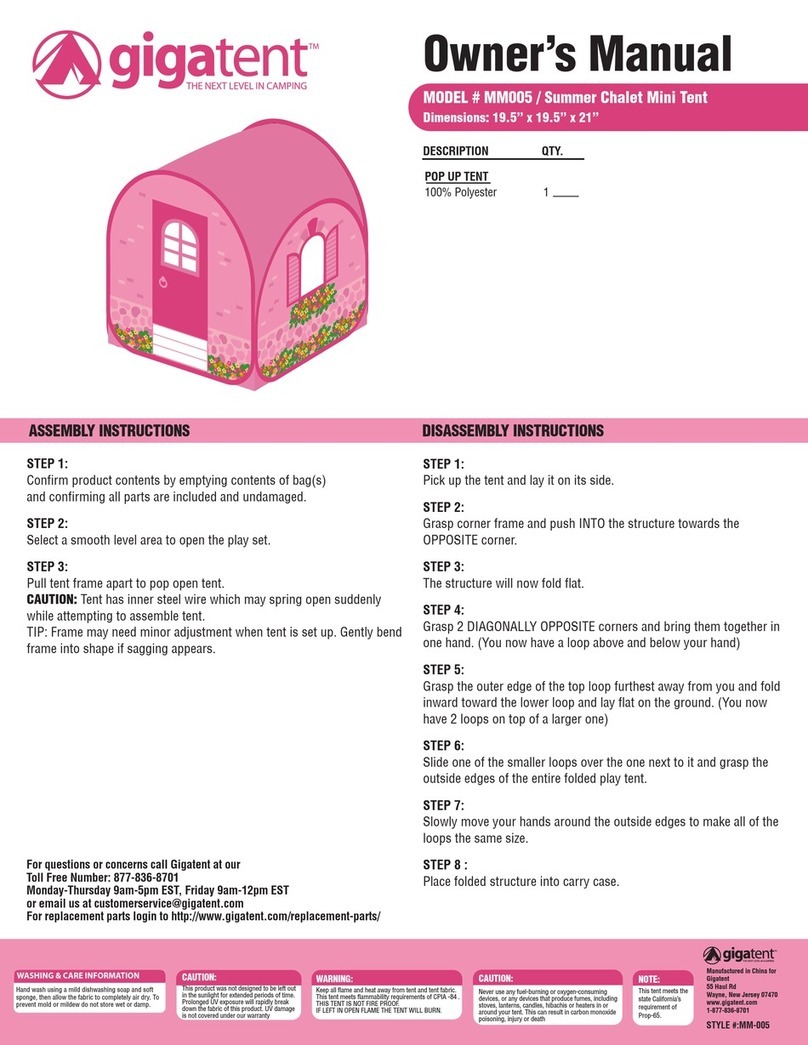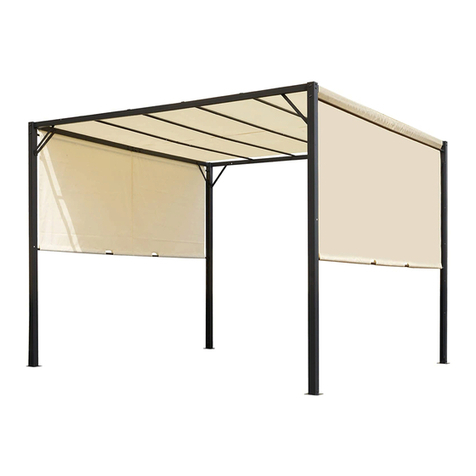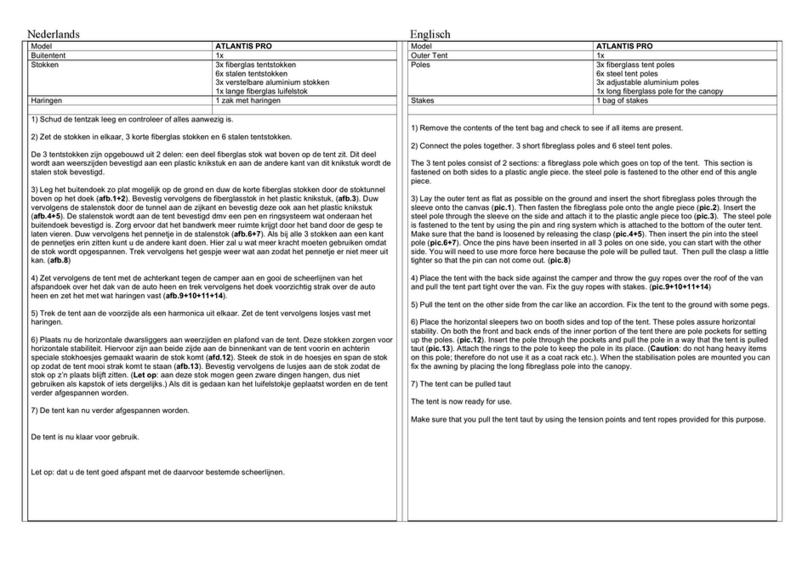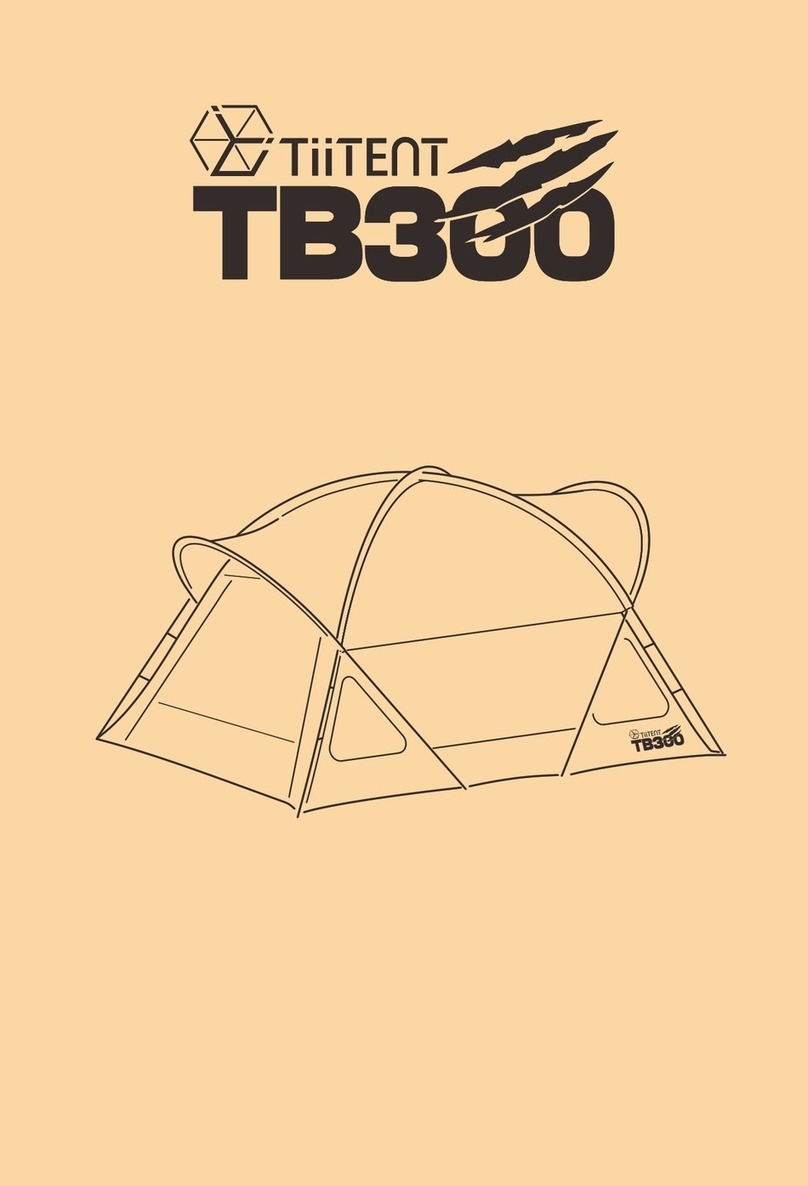
6
GB For Your Safety
This concerns your safety and your health! Please read these Operating Instructions and the
SafetyInstructionscarefullypriortousingthearticleforthersttime.
Do not allow the folding rods to get into the hands of children. The individual segments of•
therodsarecontractedbyarubberstrap.Childrenmayeasilygettheirngerscaughtin
there.
Be careful when erecting the tent. The rods are under tension.•
Fire
Takeintoconsiderationthatyourtentconsistsofinammablematerial.
Do not place cooking or heating appliances inside the tent or in its vicinity.•
Donotuseopenre,forinstancepetroleumlampsorcandles,insidethetentordirectly•
near the tent.
Avoid camping underneath trees or in the direct vicinity of beaches, so you will not be•
struck by lightning.
Leave the exits of the tent without obstructing objects.•
Ask the guard of the camping ground about installations and safety measures and provi-•
sionsincaseofreonthesite.
Important Advice
Before starting to travel
Make yourself familiar with the construction of the tent. In this way you make sure that you•
can erect the tent quickly and without any problems at the camping ground.
Make sure you have packed together all components of the tent.•
Trytondoutinadvancewhichnaturethesoilofthecampinggroundhas(forinstance•
sandy, gravel) and pack suitable earth nails or tent pegs.
When using the tent
Allow the venting appliances always to remain open so that condensing water cannot•
accumulate inside the tent.
Avoid spraying anti-insect spray inside the tent or near the tent. Anti-insect spray may im-•
pair the density of the textile of the tent.
When it is raining
Anewtentmayeasilybecomeleakyduringtherstrain.Duetothemoisture,thebreswill,
however, contract quickly so that the tent will again become impervious to water within a
short time. Avoid, for this reason, to touch the inside of the outer tent during rain. The tent
might become leaky at that spot! During rain, a high degree of air humidity is caused which
may condense in the inside of the tent.
Repair
Broken rods can be replaced by new ones.•
Repair small leakages at the seams by means of seam sealant and at the tent fabric by•
means of impregnation spray.
You can repair small holes or tears in the fabric by means of a suitable repair set for nylon/•
polyester tents.
Cleaning
Use the usual commercial means of care for polyester tents for the cleaning of the tent.•
Do not wash the tent in the washing machine.•
Do not have the tent cleaned by the drycleaner.•
Packing and storing
Pack the components of the tent in a dry and clean condition to avoid the creation of•
mould. Allow the parts to dry thoroughly if they have become wet during use.
Store the parts of the tent at a dry place. The fabric, the rods and zipper may be attacked•
by mould or corrosion if stored in a wet condition.
Tent parts
A) Outer tent (1 x) B) Frame rods (2 x)
C) Steel poles (2 x)
D) Guy lines (6 x) E) Nail pegs (10 x)
The site
Select a site that is as level as possible and free from depressions in the ground.•
Remove stones, rocks, branches of trees and other objects before you begin with the erec-•
tion of the tent. Sharp edges may not only damage the tent but they can also be very
annoying.
Erect the tent in such a way that the entrance is out of the direction of the wind. Also make,•
if possible, use of natural wind breaking effects.
General instructions
Make the transport bag completely empty.•
Connect all rods in the required way.•
Place the accessories, such as earth nails, tent pegs, tensioning cables, etc. in the proper•
way around you.
Erection
1. Push the 2 poles through the crossed channels of the tent (ill. 1)
2. To erect the tent, the poles are to be bent one after another and tensioned with the eyelet
at each corner (Ill. 2).
3. Fix the tent to the ground with enclosed pegs.
4. The door can be propped up with two poles. Assemble the poles and insert the pointed
end of the pole through the eyelet at the corner of the door. Tension the entrance by
puttingoneendoftheguylineoverthepointofthemetalpoleandxthelowerloopto
the ground with a peg.

